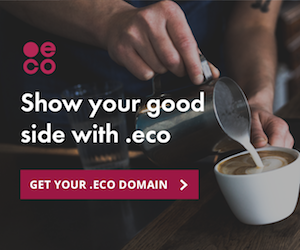 “It’s a brand on a brand. And if that brand has value, it enhances value, if not, it detracts,” says Trevor Bowden, one of the founders of ecolabelling.org, an online directory of more than 300 eco-labels.
“It’s a brand on a brand. And if that brand has value, it enhances value, if not, it detracts,” says Trevor Bowden, one of the founders of ecolabelling.org, an online directory of more than 300 eco-labels.
A project of Vancouver, B.C.–based startup Big Room Inc., ecolabelling.org was launched in 2008 to respond to a swarm of labels making their way into the marketplace. “We saw that there was a huge move to ‘green’ business and ‘green’ purchasing,” Bowden says. “A lot of claims started being made. … We saw a gap emerging between perceived and actual ‘green.’”
![]() Eco-conscious shoppers have probably noticed hordes of new “green-approved,” “100% natural” eco-friendly goods—claiming to be “certified” by some organization or other—popping up on store shelves. So many, in fact, that it becomes hard to know which claims are real.
Eco-conscious shoppers have probably noticed hordes of new “green-approved,” “100% natural” eco-friendly goods—claiming to be “certified” by some organization or other—popping up on store shelves. So many, in fact, that it becomes hard to know which claims are real.

 …as consumers have become more interested in the back story of whatever they’re tossing in the shopping cart, the proliferation of “pick me!” logos has become somewhat overwhelming.
…as consumers have become more interested in the back story of whatever they’re tossing in the shopping cart, the proliferation of “pick me!” logos has become somewhat overwhelming. 
 “It’s as much about maintaining and strengthening the market for ecolabels as anything,” Trevor Bowden, co-founder of Ecolabel Index, says of the push for more authentic labeling. “If consumers don’t trust the claims, that can have far reaching implications.”
“It’s as much about maintaining and strengthening the market for ecolabels as anything,” Trevor Bowden, co-founder of Ecolabel Index, says of the push for more authentic labeling. “If consumers don’t trust the claims, that can have far reaching implications.”
 “It’s a brand on a brand. And if that brand has value, it enhances value, if not, it detracts,” says Trevor Bowden, one of the founders of ecolabelling.org, an online directory of more than 300 eco-labels.
“It’s a brand on a brand. And if that brand has value, it enhances value, if not, it detracts,” says Trevor Bowden, one of the founders of ecolabelling.org, an online directory of more than 300 eco-labels.
